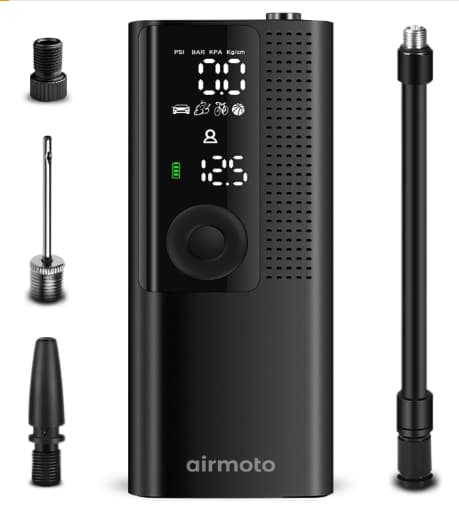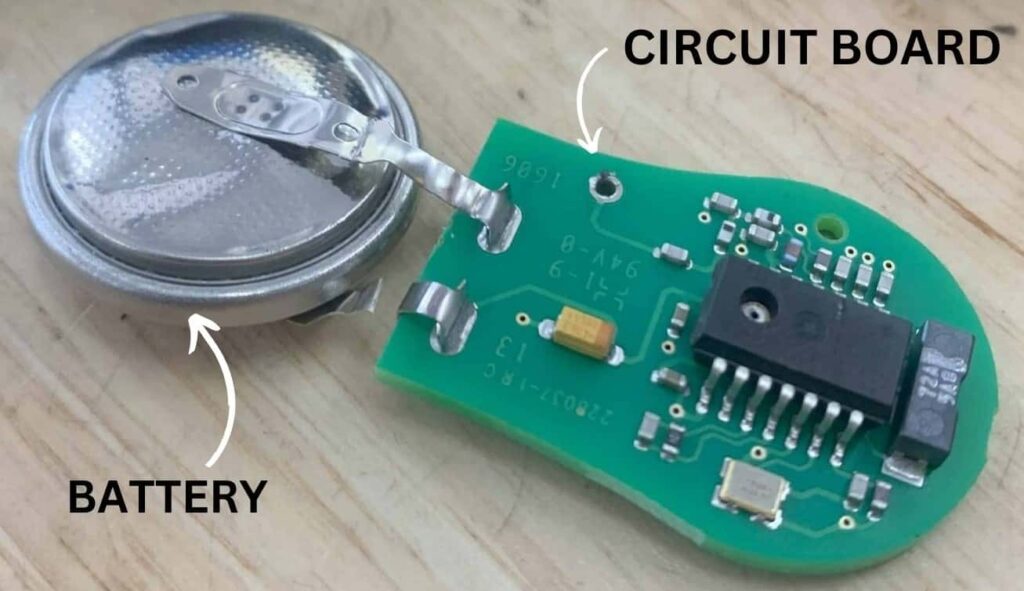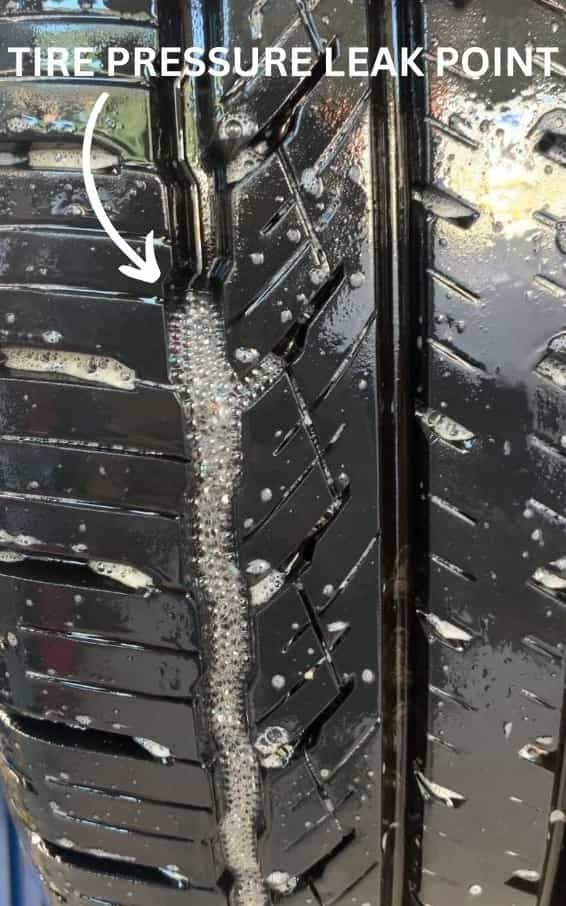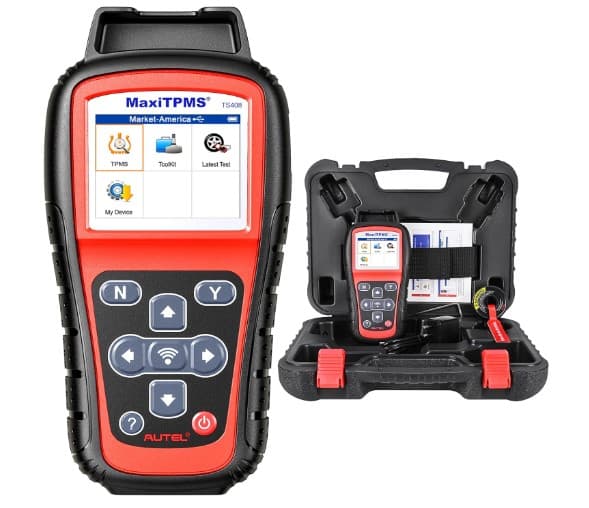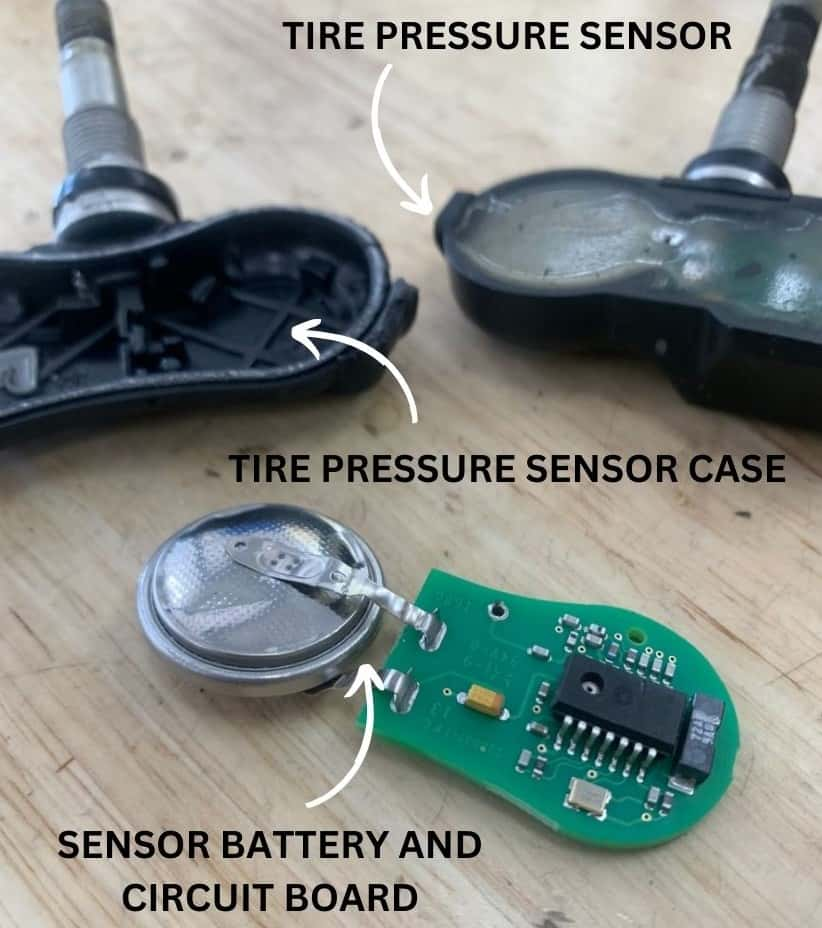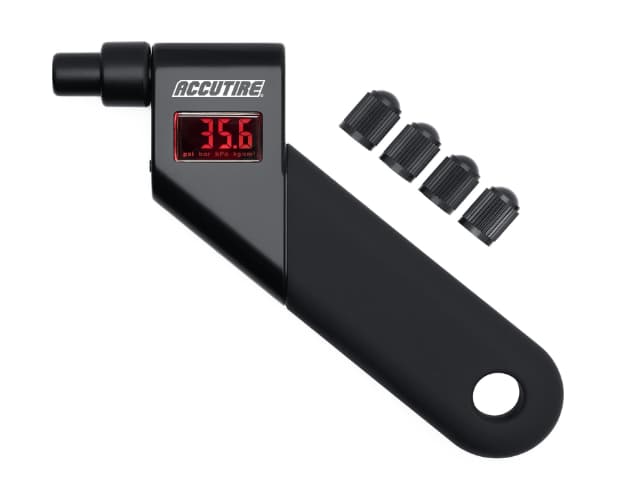What is the Chevrolet Trax Tire Pressure Monitoring System?
The Chevrolet Trax tire pressure monitoring system exists to keep you and your vehicle safe on the road. The TPMS measures all four tires’ current air pressure and temperature and reports its findings on the Chevy Trax’s information display screen. This is an essential feature of the vehicle to have working properly for vehicle safety and performance. The Chevrolet Trax TPMS is made up of 4 main components; tire pressure sensors, a TPMS receiver module, vehicle computer and low tire pressure display and alerts.
How Does the Chevrolet Trax TPMS Work?
Sensor Location: Installed within every Chevy Trax tire, these sensors are affixed at the foundation of each valve stem. They are not visible without removing the tire from the wheel. Their role is to consistently measure the tire’s air pressure and temperature and transmit its findings.
Communication Mechanism: The sensors employ radio waves, either at 315 Mhz or 433 Mhz frequencies, to transmit live tire data regarding air pressure and tire temperature to the Chevy Trax’s on-board computer.
TPMS Receiver Module: This module exists to capture the incoming data from the tire sensors. It interprets and sorts the data and then forwards it to the Chevy Trax’s main computing system, the engine control module (ECM).
Chevy Trax ECM: The Chevrolet Trax ECM receives, evaluates and analyzes the incoming tire data against the preset recommended tire information set by Chevrolet.
Low Tire Pressure Alert: When the Chevy Trax air pressure levels dip below the preset tire information, the low tire pressure alert is triggered – a yellow exclamation point on the dashboard.
Diagnostic Check: The Chevy Trax tire pressure monitoring system has a self-assessment feature to notify the driver if the system is not functioning properly. The low tire pressure alert will flash – this is called a TPMS malfunction.
How to Reset the Chevrolet Trax Tire Light (2014-2024)
Note: The Chevrolet Trax does not have a tire pressure reset button.
Set and adjust the Chevy Trax tire’s air pressure to the recommended values while the tires are cold.
Drive the Chevrolet Trax for a few minutes at speeds above 25 Mph.
How to Relearn Chevrolet Trax Tire Pressure Sensors
Follow this procedure after tire rotations, tire pressure sensor replacement, or any tire/wheel services:
Fill each of the 4 tires to approximately 40 Psi.
Turn the ignition of the Chevy Trax to the ON position, with the engine OFF.
Press the Menu Button and select the Vehicle Information Menu on the information display screen.
Use scroll wheel to scroll and down to the TIRE PRESSURE MENU screen.
Press and hold the SET/CLR button while on the TIRE PRESSURE MENU screen.
A message will appear saying “Are you sure that you want to relearn?”.
Select “Yes”
The horn will beep twice if successful and the screen will read “TIRE LEARNING ACTIVE”
Go to the front driver side tire and release air until the horn beeps.
Go to the front passenger side tire and release air until the horn beeps.
Go to the rear passenger side tire and release air from the tire until the horn beeps.
Go to the rear driver side tire and release air from the tire until the horn beeps.
After completing this procedure the message on the screen will disappear.
Turn the ignition off and set all 4 tires back to their recommended pressure levels.
2023 Chevrolet Trax Tire Pressure
TIRE SIZE | FRONT PSI | REAR PSI |
205/70R16 | 35 | 35 |
215/55R18 | 35 | 35 |
What Might Trigger the Low Tire Indicator in the Chevy Trax?
Inaccurate tire inflation (too little or too much)
Tire air leakages
Missing TPMS sensors
Depleting or malfunctioning TPMS sensor batteries
Issues with the TPMS receiver module or Chevy Trax ECM
Interference from electromagnetic sources
Air temperature shifts or elevation changes
Overloading the vehicle beyond its limit
Using chains on tires
Overly dark window tinting
Changes in road surface temperatures
Mismatched tire sizes
Misaligned wheels
Software issues within the TPMS receiver module or ECM
Broken TPMS sensors during tire installation
Not resetting TPMS after tire changes
Problems with the tire valve stems
Chevrolet Trax Tire Pressure Sensor Batteries
The Chevrolet Trax includes 4 tire pressure sensors. Each sensor looks like a black plastic case attached to the tires valve stem. Within each plastic case is a small circuit board attached to a transmitter and small battery for power. The batteries are silver-oxide and are non-replaceable and non-rechargeable. Once the battery is low or depleted, you must replace the entire tire pressure sensor. Chevy Trax TPMS sensor batteries can last between 5 to 10 years or up to 150,000 miles.
Troubleshooting the Chevrolet Trax Low Tire Pressure Indicator
When the Chevy Trax low tire pressure light turns on, follow the standard TPMS reset procedure. If that does not work, follow the TPMS relearn procedure. If neither of those procedures work, the following tips and some trial and error will help troubleshoot the tire light:
TIP 1: IS A TIRE SHOWING SIGNS OF LOW AIR PRESSURE?
To ascertain if a tire leak is triggering the low pressure alert, execute the Chevrolet Trax TPMS reset steps. If the tire warning light disappears but soon returns, it signifies the system is functioning right yet a tire might be losing air. However, if the warning light remains despite all tires being correctly inflated, a tire pressure sensor might be malfunctioning.
TIP 2: SPOTTING A TIRE LEAK WITH THE HELP OF SOAPY WATER
To identify the exact location of an air leak in a tire you suspect is deflating, follow these steps:
NEEDED MATERIALS: Air compressor or tire pump, spray bottle, water, and soap.
Inflate the tire to at least 35 Psi.
Prepare a soapy mixture using water and soap. (You can use detergent, liquid soap, or even Windex.)
Thoroughly spray the tire with the soapy solution, ensuring you cover all areas, especially the valve stem and tire bead.
Carefully observe the tire for any forming bubbles.
If you spot any bubbles, trace them to pinpoint the leak’s origin.
Depending on the leak’s location:
If it’s on the tire’s tread, you can repair it with a tire plug or patch.
If the leak is at the junction of the tire and wheel (the bead), you’ll need to remove the tire and seal the wheel bead.
If it’s on the valve stem, the stem needs replacement.
TIP 3: DIAGNOSING A DEFECTIVE TIRE SENSOR WITH A TPMS PROGRAMMING TOOL
If all your Chevrolet Trax tires are inflated to their recommended 35 Psi but you still receive a low tire pressure warning, it might be due to a tire pressure sensor running on a low or exhausted battery. To evaluate each sensor’s battery condition, you’ll need a TPMS programming tool or an OBD2 diagnostic scanner. The difference between the two is the TPMS tool lets you individually inspect each sensor, while the OBD2 tool offers only diagnostic codes indicating the problematic wheel. By following the instructions of the TPMS tool, you’ll receive a detailed status for each sensor. If the analysis indicates a low battery, has communication issues, or gives odd readings (like tire temperature at -112 degrees), it’s time to replace that particular sensor. The TPMS programming tool will also allow you to program the replacement tire pressure sensor to the Chevy Trax ECM.
TIP 4: RESTARTING THE ECM IN THE CHEVROLET TRAX
Each time your Chevrolet Trax low tire pressure light activates, the on-board computer logs it as a diagnostic trouble code (DTC). Think of this like rebooting a glitching computer; you can do the same with your Chevy Trax’s computer. Here’s how:
Turn the Chevy Trax engine and electronics off.
Loosen and then detach the negative terminal from the Trax’s primary 12 Volt battery.
Reattach and secure the negative terminal to the 12 Volt battery.
Drive consistently for about 30 minutes at 50 Mph.
Should the Chevy Trax low tire pressure indicator deactivate and then reactivate while driving, this could indicate either a weakening battery in a tire pressure sensor or an actual decrease in tire pressure.
TIP 5: REACTIVATING A DORMANT CHEVY TRAX TPMS SENSOR
Tire pressure sensors can sometimes be temperamental. There are instances where a Chevrolet Trax tire is adequately inflated, the sensor battery is functional, yet the low pressure indicator stays lit. This could suggest that the TPMS sensor has gone dormant. To revive such a sensor, try these steps:
Reduce the air in the suspect tire by 20 Psi.
Then, inflate the tire to its recommended cold pressure plus an extra 5 Psi. (For instance, if it’s supposed to be at 35 Psi, pump it up to 40 Psi.
Drive the Chevrolet Trax for 10 minutes over 25 Mph.
Alter the air pressure back to 35 Psi.
Drive the Trax once more for 10 minutes.
TIP 6: WHY IS THE TIRE LIGHT INCONSISTENTLY TURN ON AND OFF?
Tire pressure is sensitive to changes in external temperatures. Generally, for every 10°F fluctuation in temperature, a tire’s pressure might vary by around 1-2 psi. For example, if the Chevrolet Trax sits overnight in a 72°F environment and by morning the temperature falls to 40°F, its tires could experience a decrease in pressure ranging from 3-6 psi. Conversely, during hotter periods as temperatures rise and when tires are driven on, tire pressure will increase. This is because air molecules shrink when chilled and expand when warmed, leading to alterations in the tire’s internal pressure. This means that your Chevy Trax low tire alert can turn on when its tires are cold and then turn off as they are driven on without any other factors. To prevent this from happening we suggest you set your tire pressures to 35 Psi when the tires are cold, before being driven on.
Common Chevy Trax Tire Pressure Questions
WHAT'S THE TIRE SENSOR PROCEDURE FOR NEW TIRES OR WHEELS?
Follow the Chevrolet Trax TPMS relearn procedure after replacing the tires. If you replace the wheels of your Chevy Trax you can swap the Chevy OEM tire pressure sensors from the old wheels to the new wheels when the tires are not mounted and then follow the TPMS relearn procedure once the wheels are remounted on the Trax.
HOW ALTITUDE AFFECTS THE TIRE PRESSURE OF A CHEVROLET TRAX
In the Chevy Trax, altitude plays a pivotal role in tire pressure readings. For every 1,000 feet rise in elevation, there’s an increase of approximately 0.5 psi in tire pressure. So, if you drive your Chevrolet Trax from sea level up to a mountainous altitude of 5,000 feet, the tire pressure monitoring system will show an increase of about 2.5 psi.
HOW SAFE IS IT TO DRIVE THE CHEVY TRAX WITH THE TIRE ALERT ON?
No, it’s not safe to drive your Chevrolet Trax with the low tire pressure light on and we strongly advise against it. When the tire pressure light is triggered, pull over immediately, examine all of your tires, and check each tire’s air pressure manually with a tire gauge. The tire light is either triggered because one or more tires is low on air or one or more tire pressure sensors are not working. Driving with low tire pressure is not safe.
HOW FAR CAN YOU DRIVE THE CHEVROLET TRAX WITH THE LOW TIRE LIGHT ON?
There is not a preset amount of time or miles you can drive your Chevy Trax with the low tire pressure light on. The only way you can know how long or far you can drive with the TPMS light on is by knowing what the exact problem is for why the tire light is on.
WHY IS THE CHEVY TRAX TIRE LIGHT FLASHING?
If the Chevrolet Trax low tire pressure light is flashing, there is a TPMS malfunction. A TPMS malfunction indicates a communication issue between a tire pressure sensor and the Chevy Trax ECM or TPMS receiver module. This is a self diagnostic feature in the vehicle. The Chevrolet Trax TPMS will malfunction when the battery is low or dead in a tire pressure sensor or when a tire pressure sensor is not in a wheel, such as in the spare tire.
CAN TIRE PLUGS BE CONSIDERED A RELIABLE SOLUTION FOR TIRE PUNCTURES?
Tire plugs should only be used to fix tire punctures on the tread of a tire. Never use them on a tire’s sidewall or if the tread of the tire is completely worn.
ARE CHEVY TRAX TIRE SENSORS AT RISK WHEN USING TIRE SEALANTS?
Injecting a tire sealant like Slime or Fix-a-flat into a tire can be potentially hazardous to the electronics of a tire pressure sensor in the tire. After using a tire sealant, have the Chevrolet Trax TPMS sensor’s functionality tested.
Everything in this article is applicable to all Chevrolet Trax models and versions including the Dodge Trax LS, 1RS, LT, 2RS, and ACTIV.
Please note that this blog post contains Amazon affiliate links. This means that if you make a purchase through one of these links, we at TPMSRESET.COM may earn a small commission at no extra cost to you. We only recommend products that we personally use and believe in. Thank you for supporting us.
2022 DODGE TRAX MANUAL: https://cdn.dealereprocess.org/cdn/servicemanuals/chevrolet/2022-trax.pdf



